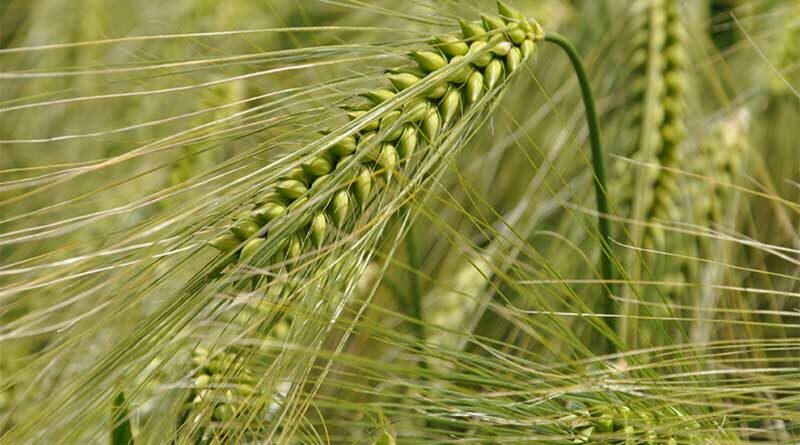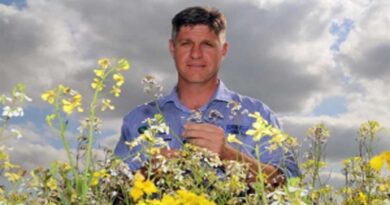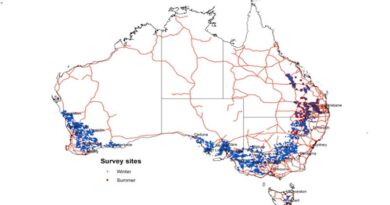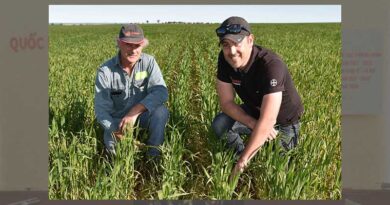Australia: Wild radish seed targeted for destruction
01 September 2022, AU: In the lead up to grain harvesting across southern Australia, growers are planning their weed management activity to control one of the most problematic and competitive broadleaf weeds – wild radish – and its seed is on the hit list.
Dr Jason Emms, Manager – Weeds, GRDC says that before harvest is the ideal time to stop seed-set of wild radish, control late-spring germinations, undertake crop-topping with registered herbicides and plan for harvest weed seed control.
“Growers in the region have told us they are concerned about wild radish developing resistance to routinely used herbicides,” says Dr Emms.
“To help prevent this, growers need to deploy a mix of tactics throughout the year to prevent seed set and to minimise the chances of herbicide resistance developing.”
If left unchecked immature green plants present in high densities can interfere with harvest, and mature seed can return to the seed bank creating an on-going problem.
GRDC has invested in multiple projects over the past 25 years to identify solutions to control wild radish.
This research has been compiled into the Wild Radish Fact Sheet that details measures growers can take to control the weed.
Weed expert and fact sheet author John Stuchbery says now is the time growers should check for wild radish that survived herbicide applications, and late-germinating plants.
“It is important to stop these seeding and topping up the seed bank,” says Mr Stuchbery.
“Growers can apply a follow-up in-crop herbicide with a different mode of action if the window for herbicide has not passed.” He adds that now is the right time to plan for crop topping or desiccating prior to harvest, and for harvest weed seed control.
University of Western Australia research agronomist Dr Mike Ashworth works as part of the Australian Herbicide Resistance Initiative that is funded by GRDC and says growers are well-positioned to get on top of wild radish.
“In Western Australia, back in the 2000s many growers were not able to crop because of wild radish – but now they have it under control,” he says.
“It is a war that can be won with attention to detail and the biggest Achilles heel is harvest weed seed control.”
Seed generated from one year of wild radish can leave enough seed dormant to fuel eight more years of weed infestations.
Harvest weed seed control systems such as seed destructors can intercept and pulverise up to 95% of wild radish seed.
Growers who use harvest weed seed control systems including seed impact mills, chaff carts and chaff decks can reduce the wild radish seed bank over time, giving themselves the upper hand.
There are also herbicides registered that can be applied pre-harvest that are effective against wild radish, these are detailed in the GRDC Pre-harvest herbicide use fact sheet.
Long-term planning, with a focus on reducing the weed seed bank is key to successful control of wild radish.
For more information read the Wild Radish Fact Sheet.
Additional resources include the GRDC Pre-harvest herbicide use fact sheet, the GRDC podcast The weeds are evolving – annual ryegrass and wild radish (2020) and the GRDC videos The weeds are evolving | annual ryegrass & wild radish (2020), and Tactics to manage wild radish – Peter Newman (2018, Western region) and the GRDC-supported WeedSmart resources.
WeedSmart has investment from the GRDC and commercial companies and delivers science-backed weed control solutions. GRDC is a Platinum Partner in WeedSmart.
Also Read: 2022 Norman Borlaug Award to Indian Scientist Dr. Mahalingam
(For Latest Agriculture News & Updates, follow Krishak Jagat on Google News)















